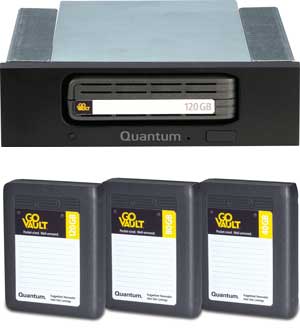In an earlier post, we discussed the pros and cons of using RAID (Redundant Array of Independent Disk) as a data recovery solution. RAID uses a disk drive component that distributes and replicates data across several levels of drivers. In a world that is becoming increasingly digital, RAID employs a physical disk drive, which is why it is important to note where physical data storage originated—tape backup.

In the event of a hard disk crash, or other catastrophic computer failure, tape backup ensures that data will not be lost. It involves copying data, either manually or with appropriate software, onto an actual tape cartridge. Tape backup systems are usually a part of a separate storage area network (SAN) that provides access to a consolidated sum of data. Tape backup also includes the ability to restore data that has been backed up back to hard disk storage devices when needed.
1994 marked the beginning of fibre-channel (FC) adapters, when developers began creating hardware to service high-speed data transfer. At the turn of the twenty-first century, 3 out of the top 10 fastest growing profitable US storage companies were tape companies. Tape backup became the most economical way to store large quantities of data.
In 2003, virtual tape libraries (VTL) entered the market, allowing for faster access to backup drive for recovery. Parallel ATA (PATA) and Serial ATA (SATA) disk arrays are the most cost effective primary storage components. The use of disk arrays paved the way for an increase in storage capacity. VTC also eliminated streaming problems associated with uploading a mass of data.
Data storage devices have transitioned from SAN, to VTL, and now SSD (solid-state drive), which uses solid-state memory to provide the same sort of backup as a hard disk drive. Hard disk drives are electromechanical devices that contain spinning disks and movable parts, but SSDs use microchips and no moving parts. They are harder to break, quieter and update data at a higher speed than physical drives. They have replaced most tape backup systems. More and more tape backup bugs are fixed every year, which poses the question: Can tape backup stay relevant in the digital landscape? Let’s look at the pros and cons.
Pros
- Information on a tape backup is stored on a tangible, physical drive, which makes it dependable and long-lasting. Tape backups can be stored for decades without any damage to the content. In fact, many tape storage devices that were made over 20 years ago can still be readable on new DLT drives.
- Tape backups are not dependent on power sources and are not affected in a power outage, making them more reliable than digital storage devices.
- Tapes are portable and can easily be taken offsite if a backup is needed.
- Tape backup is well established and requires low heat and power costs to maintain.
- While the original drives of the 1980s did not hold much information, current drives such as SATA can store as much as 2 TB.
Cons
- Backing up to physical tapes involves spending a lot of time and money because data rate is slow due to the tape’s density. Additionally, tapes need to be manually inserted and rewound, which requires hours of employee dedication.
- The cost of tape backup, per GB, is more than the cost of digital backup and the speeds of restoring from tapes are slower.
- If tapes are reused over and over again the quality of the data could deteriorate. Additionally, if a tape if not handled with care it could be damaged.
- Restoring a specific file can be difficult because it is necessary to go through an entire tape to find the data. There is no random access like with hard drives.
- The drives that tapes backup are sometimes larger than the storage capacity of a tape, so multiple tapes need to be used. This can require extra time from employees or the purchase of a tape library.
After reviewing the pros and cons of tape backup, it is evident that tapes are not going to fall out of favor anytime soon. Despite the cost, they are a stable and durable and should not be passed over for digital options. It all depends on the amount of data that needs to be stored and how quickly it needs to be accessed. If a business has over 2 TB of data, digital options may be cheaper and data will be easier to retrieve. For sensitive data or to make sure that files are never deleted, tape backup is more reliable. The best option for backup is to use a hybrid of the two options—save an entire server onto a digital drive, but copy extremely important information to a tape. After all, can you ever have too many backups?

